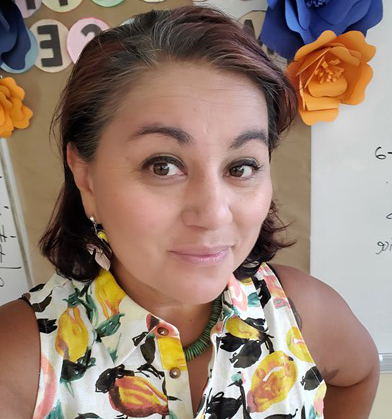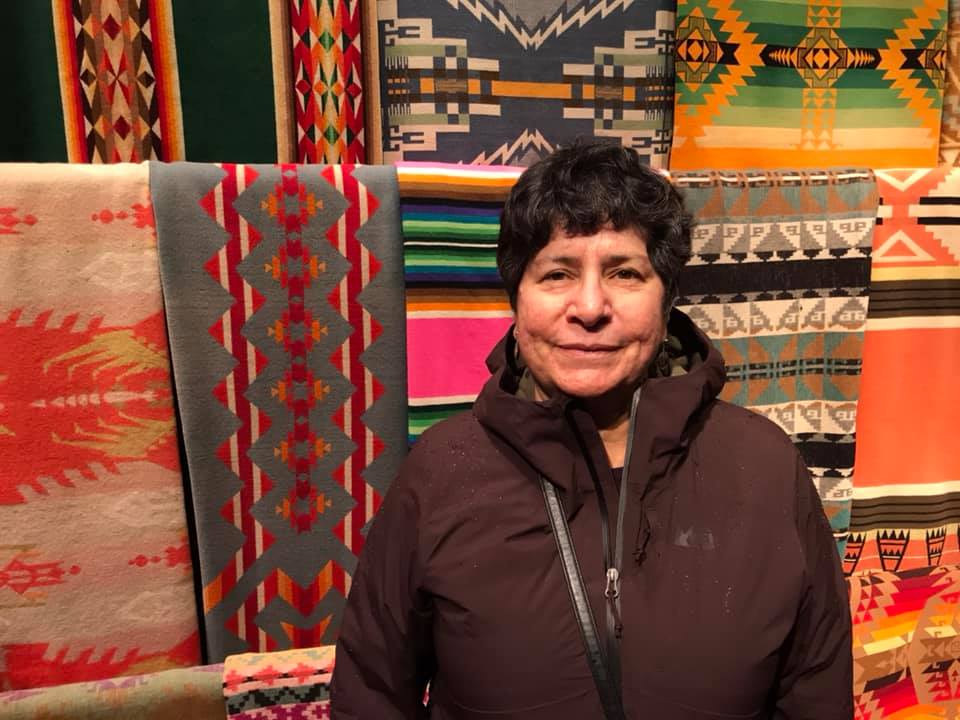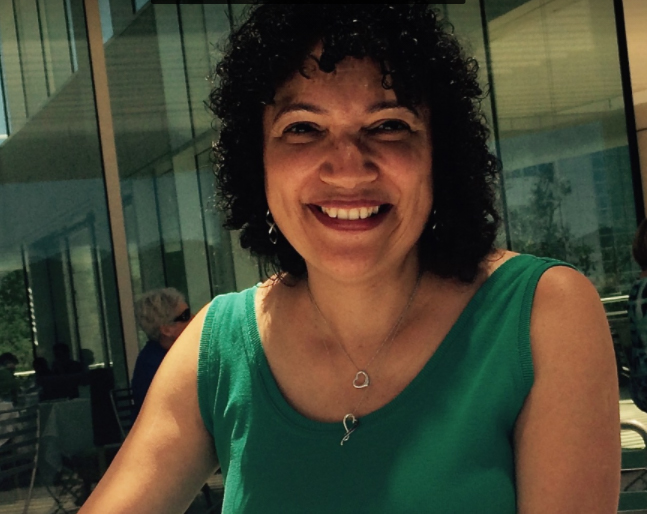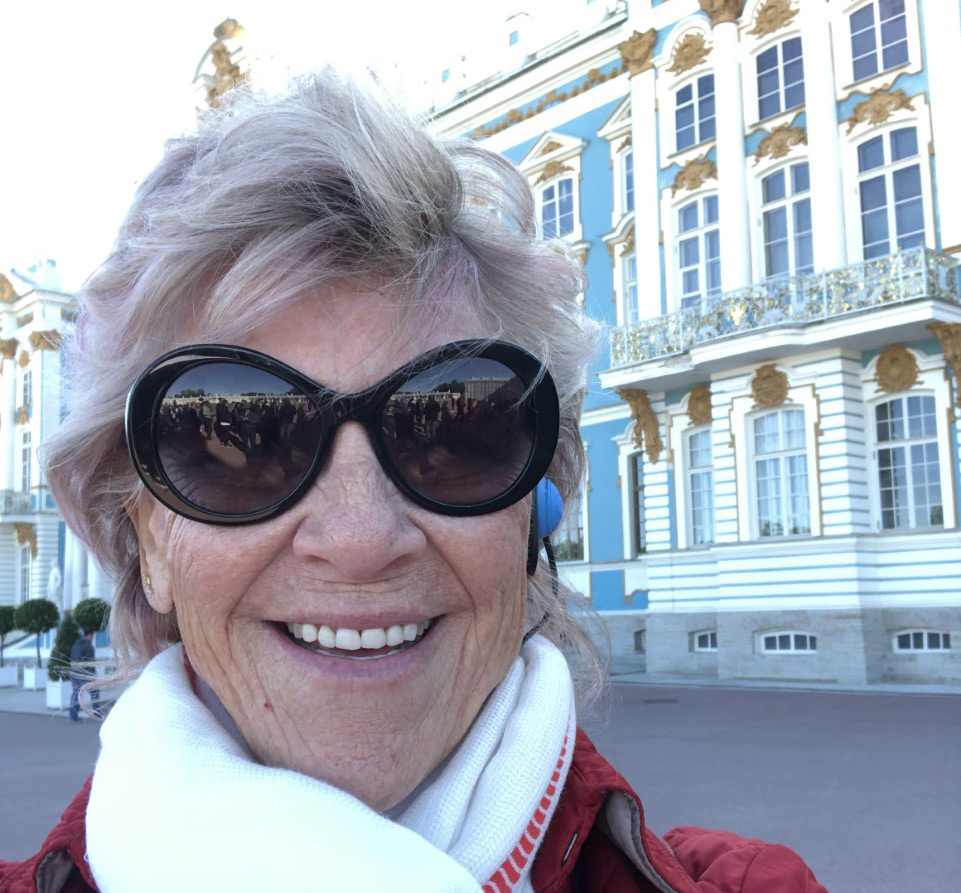Imagine you’re walking through the Crocker and you come upon a friendly person, alone or with a small group of people, with a green lanyard around their neck. They may answer a question you have about an artwork, give directions, or simply offer a warm smile as you continue on your art exploration. Before shelter-in-place, they may have been gracefully commanding the attention of a group of enthusiastic, wide-eyed 4th graders, while challenging their perceptions and conversing with them about art. These guides are a volunteer service group known as docents and they support the Crocker’s educational programs. Along with providing visitor tours, docents present outreach programs, give spotlight talks, and lead interactive activities.
The Docent Council currently has more than 100 active touring docents, plus 28 training members who are preparing to enter a new era of service. We checked in with some of the new trainees and asked about their experience training during COVID-19 and what they’re most looking forward to when it comes to working in the Museum. Their responses have been lightly edited for grammar and clarity.
Bree

What is the first object or gallery you want to visit when we reopen? I would be really interested in seeing some of the new acquisitions, particularly the piece by Narsiso Martinez — Sunday Morning II. This piece is relevant in many respects. It depicts a migrant farmworker in an asparagus field. The worker is shown placing freshly picked asparagus in a produce box, a box very similar to that which is used as the canvas. We can infer by the title that the female represented in the piece is working on a Sunday. The image of the church in the background has one consider [that] Sunday, the Sabbath, [is] a holy day of rest — a day that the migrant farmworker does not get to observe.
The worker is portrayed wearing a face covering. Given that it was created in the era of the COVID-19 pandemic, it makes one contemplate the migrant as an essential worker, and the rates at which the coronavirus is affecting people of color, especially those in lower socioeconomic status who have no choice but to work, often in unsafe conditions.
This piece has one consider not only the experience of the migrant worker but how the inequities that exist in society create a different, often dangerous COVID-19 experience for hard-working minorities.
What was the most surprising thing you fell in love with during training so far? I have fallen in love with art discussion and conversation again. Spending time with other like-minded docents having meaningful conversations about the Museum's collection has become a place of solace as we all make our way through the pandemic.
What sorts of new relationships did you form with your training class cohort? This cohort is very friendly and has a lot to share and offer. I also appreciate my mentor’s support. We are making lifelong friends here.
What will be the best thing about being a docent in 2021? I think that given that our training has all been virtual we are learning how to utilize and incorporate technology into our docenting and touring. This is a skill that is essential and will carry us into the future where accessibility will continue to reach various demographics and regions.
Christina

What is the first object or gallery you want to visit when we reopen? The first works I’d like to see as soon as the Museum opens —and when I feel comfortable enough to spend time there — are some of the works that I have researched or discussed in the various homework assignments: Rick Bartow’s Coyote and Crow Story; Albertus Del Orient Browere’s Crossing the Isthmus; Tino Rodriguez’s Xochipilli's Ecstatic Universe; and Clarence Hinkle’s Palm Canyon. By reading about the work and the artist, one develops a closeness or affinity to either the artist or the piece.
What was the most surprising thing you fell in love with during training so far? For me, it’s difficult to feel such strong emotions in the online environment. But the feel-good moments during the training process include the Museum’s informational emails about positive steps that the museum was taking to promote more diversity within the various segments of the Museum, including the docent membership. This was the message that got my immediate attention! It was not just the docent opportunity, but also the encouragement or possibility to see a more diversified collection, especially the Latino(a) / Chicano(a) / Indigenous art that could be brought into the Museum's gallery spaces.
Another great, positive feeling was learning about the philanthropic and abolitionist leanings of the Crocker family and to see how those intentions have evolved into the current effort and actions of the Museum to be more inclusive of segments of our communities that have historically had limited representation in the museum environment and experience.
In these difficult times for many of us that are experiencing feelings of isolation because of the pandemic; it is very inspiring and uplifting to have most of the presenters, Crocker Art Museum staff, and some of the docents always in good spirits and excited to share their knowledge and expertise with us.
What do you aspire to accomplish with your touring time? I aspire to be a knowledgeable, professional, and friendly docent that will serve as a contributing member of the Crocker Art Museum community and help strengthen the ties to all segments of the Sacramento community. This is what I would like to be able to do, but I realize the work required to get there.
What will be the best thing about being a docent in 2021? Once the vast majority of our communities feel safe and comfortable to venture out to public settings, those coming into the Crocker Art Museum will be delighted. Like me, I would hope that they would be open to seeing the environment as a new adventure to explore, regardless of whether the visit is one of the firsts or one of many!
Richard

What was the most surprising thing you fell in love with during training? The most surprising thing I fell in love with during the training thus far has been Visual Thinking Strategies (VTS). I intuitively had always tried to increase critical thinking through questions while facilitating but being shown VTS and how to use it has greatly helped my facilitation. I’ve adapted VTS for use in other areas of my personal and professional life. I look forward to using it more as a docent.
What do you aspire to accomplish with your touring time? I aspire to invite, include, and involve new audiences to the power, impact, passion, and meaning that comes through exploring art. I’ve always felt out of place in the “art scene." Honestly, I still often do. But being equipped as a docent-in-training has increased my understanding and expanded my perspective in numerous and varied ways. I would love to facilitate and guide others that, like me, have not previously experienced art in a meaningful way, to their own personal discoveries and revelations that enrich and empower lives through art.
What sorts of new relationships did you form with your cohort? I’m so impressed by each person in our cohort. Honestly, I often feel like a student in a room full of teachers. The experience and knowledge of each person are so much more vast than my own. Everyone is so friendly and open that each relationship is easy and welcoming.
What will be the best thing about being a docent in 2021? The best thing about being a docent in 2021 is actually two things: First, is having a massive foundation of experience, knowledge, and wisdom on which to collaboratively build on. The second is to have a role in developing solutions that overcome the challenges that the Crocker, society, and each individual is struggling through.
Donna

What is the first object or gallery you want to visit when we reopen? I am looking forward to seeing the new photography rotation . . . second would be my desire to see the Museum’s newest acquisitions, particularly the photographs.
What was the most surprising thing you fell in love with during training? I really loved Betye Saar’s works — especially the one that used Aunt Jemima — and would be interested to see them in person.
What do you aspire to accomplish with your touring time? I aspire to learn more about what the Crocker has to offer and to use my background in education to inspire children to appreciate the work there.
What sorts of new relationships did you form with your cohort? I am really impressed with, and thoroughly enjoy, working with those in my cohort. They have brought their vast experiences and knowledge of art to my consciousness. Most importantly, I have formed a wonderful personal relationship with my mentor docent. She continues to teach me so much about being a docent as well as (quite unexpectedly) has become a lifelong friend.
What will be the best thing about being a docent in 2021? The best thing about being a docent in 2021 will be working in-person at this fine institution. I feel incredibly lucky to be able to apply what I have learned in my training to my tours and to be given the ability to continue learning about art, particularly the Crocker’s collection.
Margot

What is the first object or gallery you want to visit when we reopen? This is a very difficult question to answer as there are SO many objects and paintings I want to see again when the Crocker reopens. After studying and discussing Welgatim's Song by Judith Lowry in our docent class, I continued to study her life — her background, her other artworks, the similarities in our backgrounds. (I am NOT an artist though!)
What was the most surprising thing you fell in love with during training? As someone with no art background, what surprised me was how easy it was to learn the basic art principles and other aspects of art. I have enjoyed using those principles whenever I look at advertisements in book review periodicals as they are often quite artistic and eye-catching.
What do you aspire to accomplish with your touring time? I would like to present a cogent, understandable, and age / background-specific tour to young people — and get good at it. I have very little experience being around young people and I am studying the California education K-12 guides to help me understand what is appropriate for what age.
What sorts of new relationships did you form with your cohort? Though we’ve only met via Zoom, there are several other docents whose discussions, backgrounds, ideas, and other subjects have been shared. I like the way information can be shared even when we’re not meeting, and I’ve learned from others that we have much in common despite our varying backgrounds. I am definitely eager to return to the Crocker in-person and get to know the others in my docent cohort better.
Additionally, one of the most amazing things to come out of training is my docent-mentor. What a delight to learn that she and I worked together for 12 years in a totally decidedly non-artistic work environment: I was even more surprised to learn that she was a Crocker docent as well as a docent at another California museum while we worked together. Her knowledge and background and our working relationship made our docent-mentor pairing perfect!
What will be the best thing about being a docent in 2021? Being at the Crocker often and being among the amazing, diverse, and well-rounded art collections. I am eager to return, to meet my fellow docents, get to know the Crocker staff, and envelop myself in the Crocker “magic."
If you are interested in volunteering your voice and time, there are a few ways you can get involved. First, join the Crocker on a docent-led tour or virtual program. If you see a docent at the Museum — green lanyard displayed — ask them about their experience. If you are interested in learning more about docent training, which will begin again in 2022, visit crockerart.org/docents.
Top Image: A family touring the Crocker
About the Author: Mallorie Marsh has served as the Associate Director of Education at the Crocker Art Museum for the last 4 years. After receiving a degree in Fine Art from San Jose State University, she stayed on at SJSU for a secondary education credential, which allowed her to teach high school art in San Jose and Cupertino. She herself joined the Crocker Education team in early 2010, first working in offsite school programs. In 2014, Marsh was named the Outstanding Museum Visual Art Educator by the California Art Education Association. In 2019, she was appointed by the State Board of Education to serve on the Curriculum Framework and Evaluation Committee for the newly adopted Visual and Performing Arts Standards for the state of California, an appointment she was honored and excited to be a part off.


